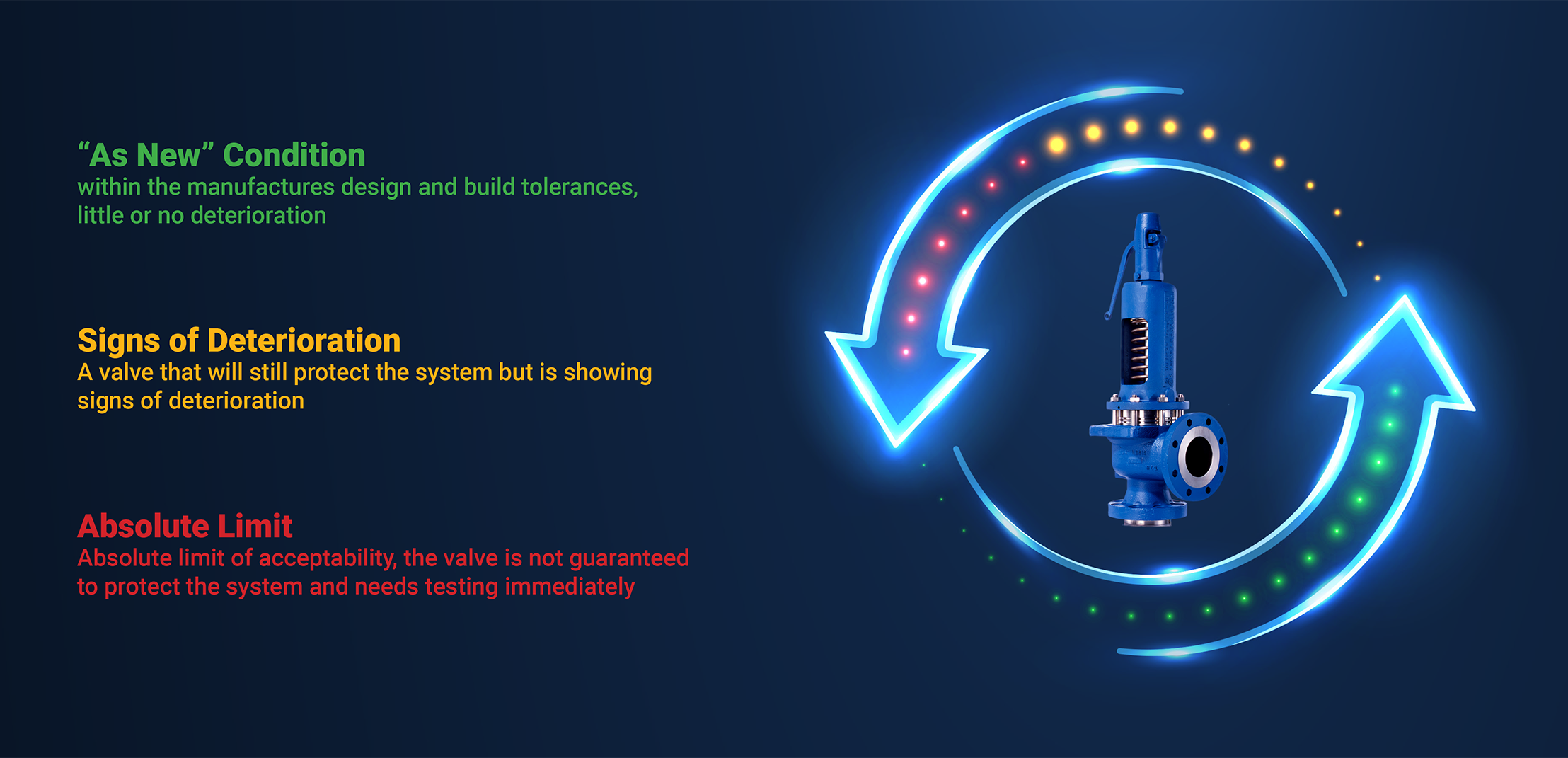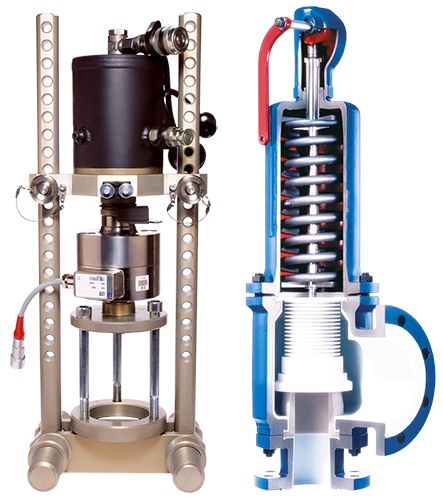Safety Valve Management - Improved
“Maintaining a valve just because a period of time has passed is inefficient, ineffective, costly and potentially risky”.
The biggest challenge during safety valve planned maintenance programmes is to correctly determine maintenance frequencies. Maintaining a valve just because a period of time has passed is inefficient, ineffective, costly and potentially risky. Gaining assurance that your safety valves operate as the manufacturer intended and certified when necessary, requires far more detailed and additional information than a normal test and component condition report can provide.
Seetru Engineering Services have developed our own Seetru Condition Rating® technology that provides a measured and concise analysis of safety valves. Using our Compu-Test™ software we can measure and record all the important parameters and produce a simple to understand reading –

“As New” Condition
Within the manufactures design and build tolerances, little or no deterioration.
A safety valve in new condition, within the manufacturer’s design and build tolerances, means the valve is in pristine working order and ready to fulfil its critical safety function. Here’s a breakdown of what that entails:
- Flawless Construction
- Precise Calibration
- Unimpeded Operation
- Reliable Performance
Signs of Deterioration
A valve that will still protect the system but is showing signs of deterioration.
A valve is a device that controls the flow of something, like a liquid, gas, or even sound. While it might still be functioning, a deteriorating valve can show some warning signs that it needs attention soon. Here’s what a valve showing signs of deterioration might look like:
-
- Reduced Efficiency
- Leaks
- Unusual Noises
It’s important to note:
Even if a valve is still working somewhat, these signs shouldn’t be ignored. A deteriorating valve can fail completely at some point, potentially causing damage or downtime to the system it protects. Early detection and replacement can prevent these bigger issues.
Absolute Limit
Absolute limit of acceptability, the valve is not guaranteed to protect the system and needs testing immediately.
- Safety Valve at the Absolute Limit of Acceptability
- Sticking or erratic operation
- Sticking or erratic operation
- Immediate Testing is Crucial
- Isolating the equipment
- Detailed inspection
- Pressure testing
- Safety Valve Unfit for Purpose
- Complete failure to open
- Severe corrosion or cracking
- Immediate Replacement is Mandatory
If a safety valve is deemed unfit for purpose, immediate replacement is mandatory. There is no room for compromise when it comes to the safety of your equipment and personnel. A qualified technician should install the new valve according to manufacturer’s specifications and perform the necessary testing to ensure proper operation.
Want to understand more about how we determine a safety valve’s condition?
Read a More Detailed Breakdown HereEarly Monitoring
= Risk Reduction and Cost Savings

The ideal starting point when gaining performance data for safety valves is from new.
This condition rating benchmark works as an initial data point for comparison when monitoring the rate of deterioration through the maintenance points.
Condition Rating ensures your valves will always
work in the event they are required to do so = RISK REDUCTION
Condition Rating improves valve efficiency
and reduces leaking valves = COST SAVINGS
Contact Us
Our valve technicians here at Seetru Engineering Services have extensive knowledge and experience, providing expert testing and maintenance services for safety valves, and a wide range of other pressure safety equipment. Contact SES today!
Contact SES
